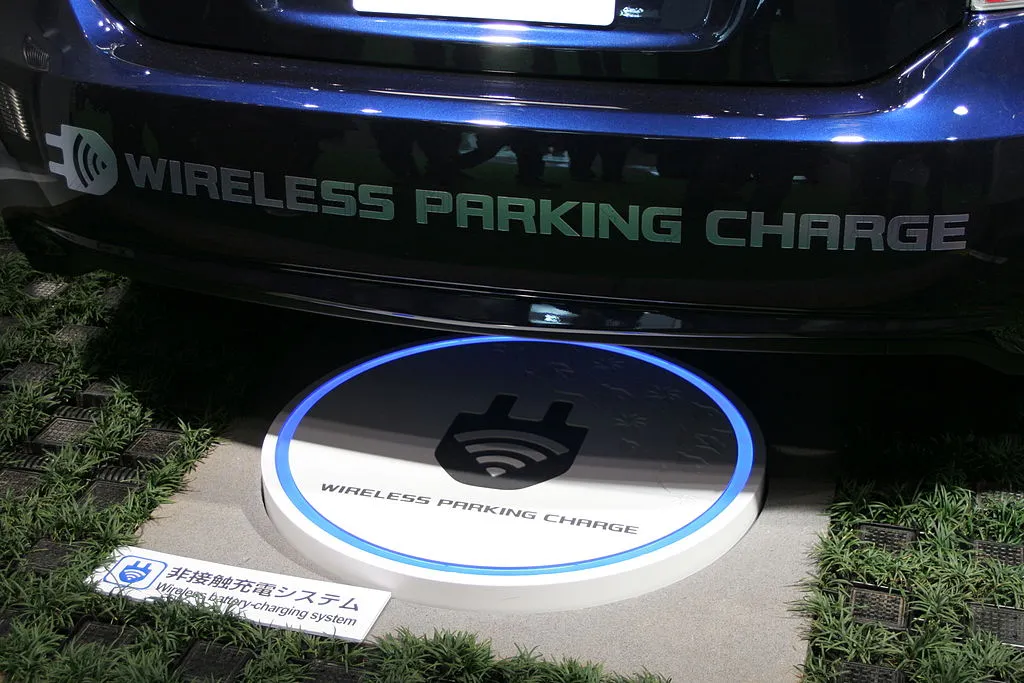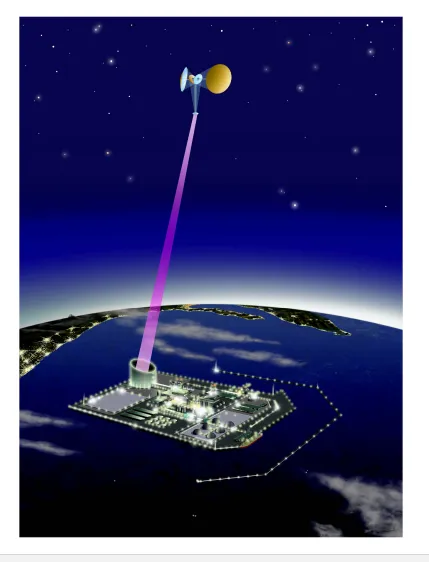In school, there was this fascinating fellow we had as a classmate. He was a bit weird which was not so much of a problem considering all of us have a bit of weirdness in us. But he was a creative soul who keeps coming up with new concepts of doing things. He just does not dream of it. He produces prototypes and drawings of it. His first project was to build a perpetual motion machine. Just like the name, a machine that was supposed to run forever (perpetually). It was supposed to negate the fundamental laws of physics especially the first law of thermodynamics; energy cannot be created or destroyed. The machine is supposed to have zero losses which are impossible on a moving machine. Well, if you would like to know more about people who have "built" a perpetual motion machine, you may have to head over here.
He usually is quite a character, but one day he wanted to do away with wires in the transmission of electricity.

Wikipedia Creative Commons: Car Wireless Charging Dock
Imagine all the cables you see overhead walking along the road gone. Yes, gone like the wind. He proposed a plan and drew it up. The idea he thought up was so good he got invited to South Africa on an all-expense paid trip to present his findings to the Institute of Electrical and Electronics Engineers (IEEE).
Many still regarded him as the dude with "crazy dreams." But he was not to be deterred. But what if he was right?
In 2014, Hiroshi Amano, a Japanese Professor, a physicist and inventor won a Nobel prize in physics for his work in developing a remote transmission of electricity using electromagnetic waves.
The idea to transmit electricity wirelessly is not something new. Currently, there is wireless power transfer of electricity, but they are usually for low power devices such a mobile wireless chargers that allows charging over short distances, and not efficient.
How the Proposed System Works
The electric power is converted into high-frequency electromagnetic waves which are then transmitted to the location where it is needed using an antenna. A receiving antenna gets the power sent and transformed it into electricity.
There are two antennas, one converts the electricy into electromagnetic waves and transfers.
A recieving antenna receives this em waves and converts it back to electricty. The only medium between these two antennas is air; so, wires are eliminated.In theory wireless transmission of electricity as of today is attainable. The only problem is the power lost in between transmission and reception. But the Nobel prize winner successfully developed an improved version of a power semiconductor that has an incredible voltage and current regulating ability, a property that would reduce the current losses experienced in the attempt to transmit electricity wirelessly.
Far-field Energy Transfer
Past attempt to transfer energy to distant places requires a far-field radiative electromagnetic wave. Using a microwave of about 1GHz frequency electric energy is transferred via electromagnetic waves via a dish-like antenna.
But due to diffraction, the bending of electromagnetic waves when it encounters an obstacle, the antennas needed are correspondingly large (several meters to km in size) to achieve enough directionality.
Applications
But leveraging on the NASA's advanced technology where conversion of energy into laser beams. It has the edge over the radio and microwaves method of transfer as there is no interference with WiFi and radio, cell towers, TVs, etc

Source: Japanese Space Agency (JAXA) proposed laser technology (solar power satellites) using direct solar capable of delivering 1GW
The application of such a venture would be massive. For instance, imagine transmitting some solar power from space back to the earth. Imagine the enormous expense saved when such technology is finally deployed.
Its application in the electric vehicle would be groundbreaking. Currently, it takes between 30 minutes to 12 hours to charge an electric car depending on a lot of factors such as: how far you want to travel, battery type, charge rate, battery size, etc. Imagine being able to charge without stopping at a charging dock!
REFERENCES
NOBEL LAURATE WIRELESS ENERGY TRANSFER PROJECT
NASA SPACE WIRELESS POWER TRANSFER PROJECT
How Long It Takes to Charge an Electric Vehicle
If you write STEM (Science, Technology, Engineering, and Mathematics) related posts, consider joining #steemSTEM on steemit chat. If you are from Nigeria, you may want to include the #stemng tag in your post. You can visit this blog by @stemng for more details. You can also check this blog post by @steemstem here and this guidelines here for help on how to be a member of @steemstem.
